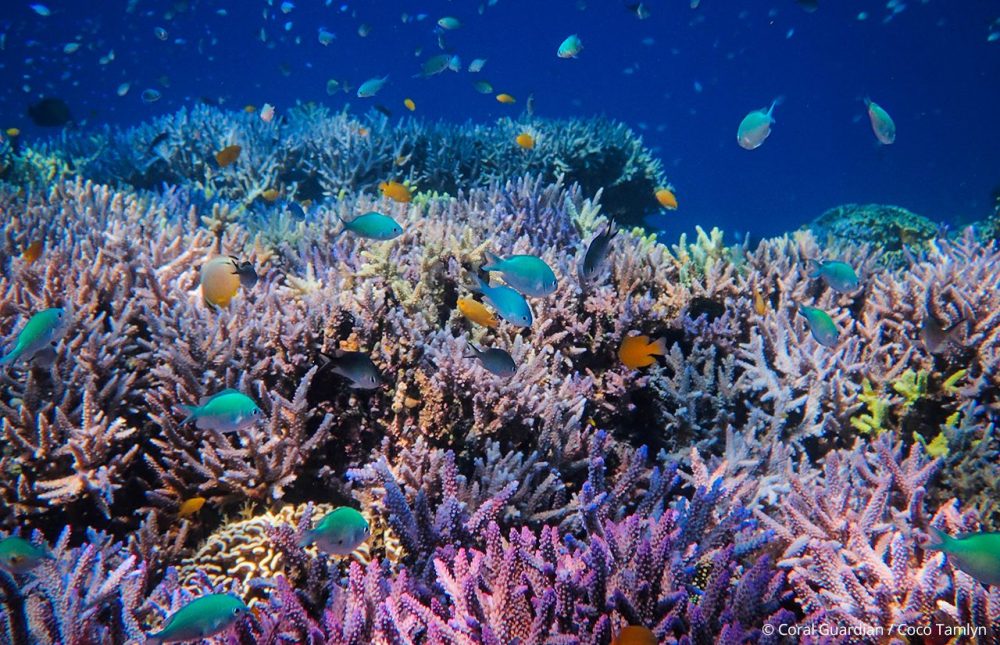Underwater symphony as a marker of good health

Underwater symphony as a marker of good health: how sound can be used to restore biodiversity in coral reefs
It is not a mystery anymore: human activities are causing environmental stress factors that affect the biosphere and thus coral reefs – pollution and the rising temperatures are the most known examples of those damaging effects. However, researchers are developing new and creative techniques to restore reefs’ biodiversity in the affected areas.
The emergency facing threatened biodiversity
Ecosystems are governed by the principle of co-dependency. Each individual has a role to play in the overall scheme. Oceans and especially coral reefs are well-known for their rich biodiversity, their vibrant colours and, more surprisingly, for the underwater symphony of this city-like part of the world. As part of nature’s fragile equilibrium, each element of this organization is sensitive to environmental variations and the consequences can be devastating.
In his 2008 article, Morgan S. Pratchett and his team made this sad observation: ‘coral loss has the greatest and most immediate effect on fish that depend on live corals for food or shelter, and many such fish may face considerable risk of extinction with the increasing frequency and severity of bleaching’. Stuck in a negative feedback loop, the more corals are damaged, the fewer the fish living amongst them, which affects corals’ health and so on.
The unsuspected nature of sound
Faced with this problem, Timothy Gordon’s unit have developed new techniques to overcome coral bleaching. And their approach is quite original because they are interested in the “music” made by living beings. Indeed, they used sound properties as a way to make coral reefs recover.
Sound is a vibrational wave that propagates itself in a media, like air or water. It is composed of certain characteristics such as harmonics and frequencies that give its uniqueness to a signal. And each state has its own vibrational signature. This information is received in different ways among species or according to the organs within an individual. Fish are able to detect signals within a certain frequency range depending on the species, as shown in Jeffrey M. Leis’s investigation.
The healing power of sound on ecosystems
Gordon’s study takes advantage of this knowledge and uses it to restore population diversity in the lagoon of Lizard Island Research Station, a continental mid-shelf island in the northern Great Barrier Reef, during October–December 2017. They used “healthy” reef-sound playback as an acoustic-enrichment treatment. And the result is quite impressive: “compared to both no-loudspeaker reefs and dummy-loudspeaker reefs, acoustically enriched reefs attracted damselfish at a faster rate in the early stages of the experiment and maintained higher abundance throughout the 40 days.” (Figure 1)

Figure 1: Effect of acoustic enrichment on a damselfish community development. (a) Outputs from a generalised additive mixed model, modelling number of juvenile damselfish per reef (mean ± SE) over time based on repeated surveys; orange and red lines and ribbons are almost completely overlapping. (b) Raw count data of the number of juvenile damselfish per reef (mean ± SE) from surveys undertaken after 40 days.
Playback of healthy reef sound “led to increased abundance, species richness and diversity at the whole-community level”. (Figure 2)

Figure 2: Community-level effects of acoustic enrichment. (a) Total abundance, (b) species richness, and (c) effective Shannon diversity of juvenile fish communities on experimental patch reefs.
In other words, the acoustically mediated recovery increased the recruitment of reef fish communities and helped the rehabilitation of biodiversity in these regions.
The results of these acoustic experiments could serve as a complementary tool to the active restoration techniques of damaged reefs, allowing biodiversity’s recovery. Humans can have a positive impact and invert the damages caused to nature by using physical properties and thus restore these ecosystems.

